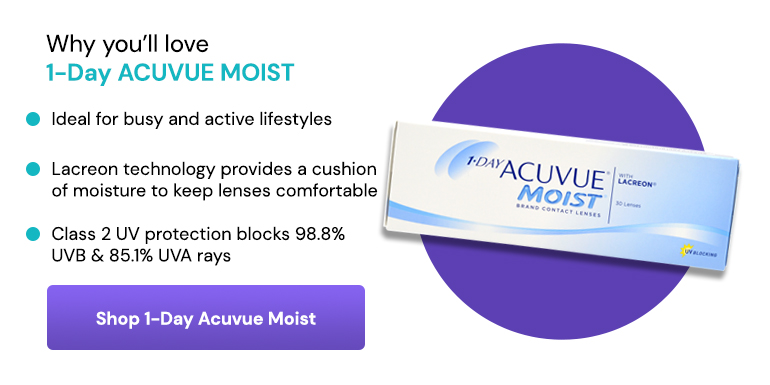What is hyperopia?
What is hyperopia?
Hyperopia is also known as hypermetropia, long-sightedness or far-sightedness (in the US). It is a common refractive error that causes close objects to appear blurry, while distant vision is not affected.
Who is at risk?
Most babies are born hyperopic but outgrow this condition over time as they grow. Mild hyperopia is usually resolved by the time the child reaches their teen years. Once detected, it should be monitored by an optometrist to ensure the refractive error is resolved at an early age.
Children
As long-sightedness usually occurs from birth on, the eyes tend to adapt to this refractive error and accommodate for it to correct themselves. As children grow, their eyes lengthen and often improve without professional assistance.
If the severity of hyperopia is more intense, it can remain through to the early school years and may cause headaches or the development of a squint or lazy eye. Severe hyperopia should be treated without delay.
Adults
If hyperopia is not corrected during early childhood and stays through adolescence, it is likely to stay through adulthood.
Long-sightedness can also develop later in life, as our bodies age and the lens of your eyes that is responsible for focusing on near and distant objects loses its flexibility and is no longer able to adjust.
Is the development of hyperopia preventable?
No, the development of hyperopia is not preventable, as it is usually a condition that children are born with. However, regular eye checks can ensure that the progression doesn’t intensify.
Regular eye tests
If you or your child is long-sighted, regular eye tests should be attended, as per the recall advised by the optometrist, to confirm whether your prescription glasses or contact lenses are still the correct measurements. Wearing glasses or lenses with the incorrect prescription may worsen your eyesight and can cause irritation or headaches.

Causes
Long-sightedness is caused when the eyeball is smaller than the average or the cornea (the clear front part of the eyes) if flatter than normal. Because of this, light rays that enter the eye are unable to focus on the retina in the back of the eye, but rather the focus lands behind the retina. Usually, the eye is able to accommodate and help move the image onto the retina. Therefore, most people who have mild long-sightedness may not realise they have an issue. Where the eye finds it hard to accommodate, symptoms of headaches or blurred vision can occur when looking up-close.
Genetics
As most of our characteristics are inherited from our parents, it is no surprise that your eyesight falls under this, too. Studies have shown that more than 50% of the time, those with hyperopic eyes have at least one parent who used to be or still is long-sighted.
Further, complications in the womb or growth difficulties during early childhood can also increase the risks of hyperopia.

Symptoms
The primary symptom of long-sightedness is that nearby objects appear blurred and out of focus. This may be accompanied by squinting to try and see clearly. Hyperopia may also cause tired eyes or headaches after extended periods of reading, writing or computer work.
How to tell if your child is long-sighted
Children may not show any obvious symptoms of hyperopia at first, but if the condition does not regulate by itself and is left untreated, they may develop a squint (where the eye either turns in or out) or lazy eye (where the affected eye does not focus, even with a correction in place). Children may also complain about discomfort of the eyes or surrounding area, as they rub them often or blink frequently.
It is also possible that children have trouble with reading and writing in school. If either the parents or teachers notice this, it may be best to contact an optometrist and schedule an eye test.
Diagnosis
When you schedule an eye test with your optometrist, they will be able to tell you whether you are long-sighted.
Routine eye exams are recommended to be scheduled every two years for those with healthy eyes, however, if you or your child are experiencing vision changes, sight tests can be scheduled at any point.
During the eye exam
The optometrist is trained to examine your eyes and will carry out a number of tests during the eye exam.
They test your visual acuity, which is the part where you read from a chart of letters or numbers and perform a refraction (a method of determining the prescription). Additionally, they assess the health of the eyes, which is an important part of the exam.

What are the treatment options?
Hyperopia does not always need to be treated, as it often tends to correct itself in children’s eyes. The shape of their eyeballs changes as their bodies grow and develop.
Glasses
Corrective glasses are the most common option for children with hyperopia. There are many options even for young children that offer a simple and safe option to treat hyperopia. Long-sighted adults also often reach for prescription glasses.
Contact lenses
Contact lenses are preferred by some wearers as they eliminate heavy glasses and offer a wide field of view. The prescription may be slightly different to glasses, however, as they sit directly on the eyes.
Hyperopia prescription measurements
Once you have had your eyes tested and find that you are long-sighted, you will receive a prescription from your optometrist.
How to read your eye test
On your prescription, you can always find the following three categories:
The sphere indicates the dioptres that describe to which degree you are long-sighted and shows a positive number.
The cylinder will indicate whether you have astigmatism. If you don’t have an astigmatism in either one of your eyes, this will be left empty.
The axis also indicates the astigmatism and shows at what angle or direction it is in. This is also left empty if it does not apply to you.



